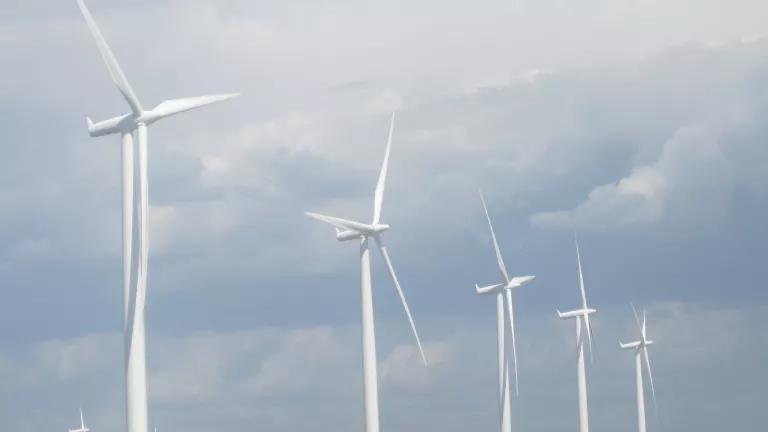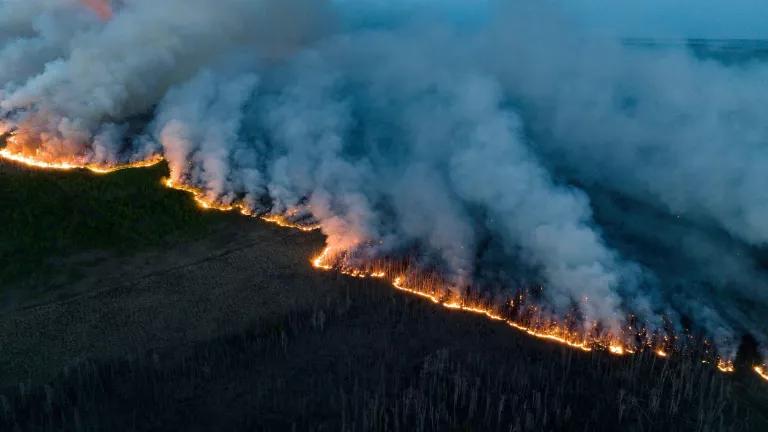We May Never Fully Know Hurricane Laura’s Health Harms

Hurricane Laura survivors aren’t getting much press these days, even though they have a long road ahead to some semblance of recovery.
One of the issues still making headlines is the Louisiana Department of Health’s regular updates of Laura’s death toll. As of September 9, 27 Louisianans have perished due to the storm.
But figuring out the number of people who get sick, injured, or suffer mental health effects because of the hurricane will take much longer—and likely will be a significant underestimate.
Delays and gaps in disaster health data are a big problem, according to a new Consensus Study Report from the National Academies of Sciences, Engineering, and Medicine. To protect people in real-time, evaluate response and recovery activities after disasters, and plan for the next disaster, it’s crucial to understand the what, when, where, how, and why of disaster-related health outcomes.

The report also notes that:
“As climate change alters the frequency and severity of many natural disasters and the map of global vulnerability shifts and expands, these data can provide an accounting of the financial and societal costs of failure to prevent or mitigate the effects of climate change.”
The inconsistent and incomplete patchwork of data during the COVID-19 pandemic has illustrated just how hard our current system makes it to assess the mental and physical health effects of disasters, especially among vulnerable populations. There’s the virus itself, of course, but also the cascading effects of job losses, delays in cancer care and other medical care, increased deaths from opioid overdoses, and more.
Adding Laura and other hurricanes to the mix will complicate things further. That’s because hurricanes tend to scatter thousands of evacuees across multiple states. They also generate a long list of potential health hazards of their own, including storm debris, toxic air pollution, bacterial contamination of food and water, mold, and even swarms of mosquitoes.
Here are just a few of the potential health issues that could crop up in Allen, Beauregard, Calcasieu, Cameron, and Jefferson Davis parishes, some of the areas of southwest Louisiana hit hardest by Hurricane Laura.
- Increased risk of COVID-19 infections. As of September 13, at least 20,000 Laura evacuees were being sheltered in Louisiana and Texas, mostly in hotels. It’s not clear how many more are staying with family and friends, potentially in crowded conditions. Some of those people have already evacuated again as Tropical Storm Sally strengthens into a hurricane before making landfall on the Gulf Coast. The widespread movement of people combined with too few evacuees taking advantage of free COVID-19 testing has public health officials concerned about a coming surge of cases.
- More heat-related deaths. Eight of the 27 deaths—including the most recent one—were heat-related. The number of heat deaths in southwest Louisiana will almost certainly climb as storm survivors engage in strenuous cleanup work and go for many more weeks without electricity for refrigeration and air conditioning. The risk will be higher for older adults and those with chronic illnesses. For example, the average age-adjusted rate of diabetes in the five parishes is about 12 percent, compared to 8.5 percent nationally. Diabetes can interfere with how well the human body’s natural cooling mechanisms work, and extreme heat can in turn affect how much insulin someone with diabetes needs.
- Increased food insecurity. In 2018, the average food insecurity rate in the five parishes was 14.1 percent, more than 2.5 percentage points above the national average. Feeding America estimates that the COVID-19 pandemic alone could increase the average rate to 20.2 percent in 2020—a 43 percent increase. Based on other major hurricanes such as Harvey, Sandy, and Katrina, Hurricane Laura could push even more people into food insecurity.
- Unmet mental health needs. Each of the five parishes are designated Health Professional Shortage Areas for mental health providers. The state and parish governments, Red Cross volunteers, and others are trying to ensure that Laura survivors get the emergency mental health care they need. (Funds from the Federal Emergency Management Agency for crisis counseling may help pay for some of that.) But the mental health impacts of disasters can last for years, and it’s painful to imagine how the double whammy of COVID-19 and Hurricane Laura might affect southwest Louisiana. Black and brown communities may face some of the most significant long-term challenges given that they are less likely to receive mental health treatment than the population as a whole.

Given these complexities, what can officials do to improve health tracking and reporting during and after disasters—and ensure that people get the help they need? Recommendations in the Consensus Study Report include:
- Creating a uniform nationwide framework for assessing the physical and mental health effects of disasters.
- Defining the illnesses and injuries that should be consistently tracked during and after common disasters such as hurricanes.
- Facilitating health-protective actions by state, local, tribal, and territorial decision makers by ensuring they have timely access to essential data and technical assistance.
- Ensuring medical examiners, coroners, and other medical certifiers have the training and support they need to appropriately identify and classify disaster-related deaths.
The 2020 U.S. Census will determine how federal funds for building health clinics, roads, and schools will flow into states and communities. Similarly, a better national framework for tracking disaster-related illnesses, injuries, and deaths will inform where to concentrate health interventions before, during, and after disasters. With a more data-informed system, communities also might not have to rely so much on sustained media attention to secure aid.
That’s a good thing, given that rapid-fire parades of climate-fueled disasters have become our norm.




